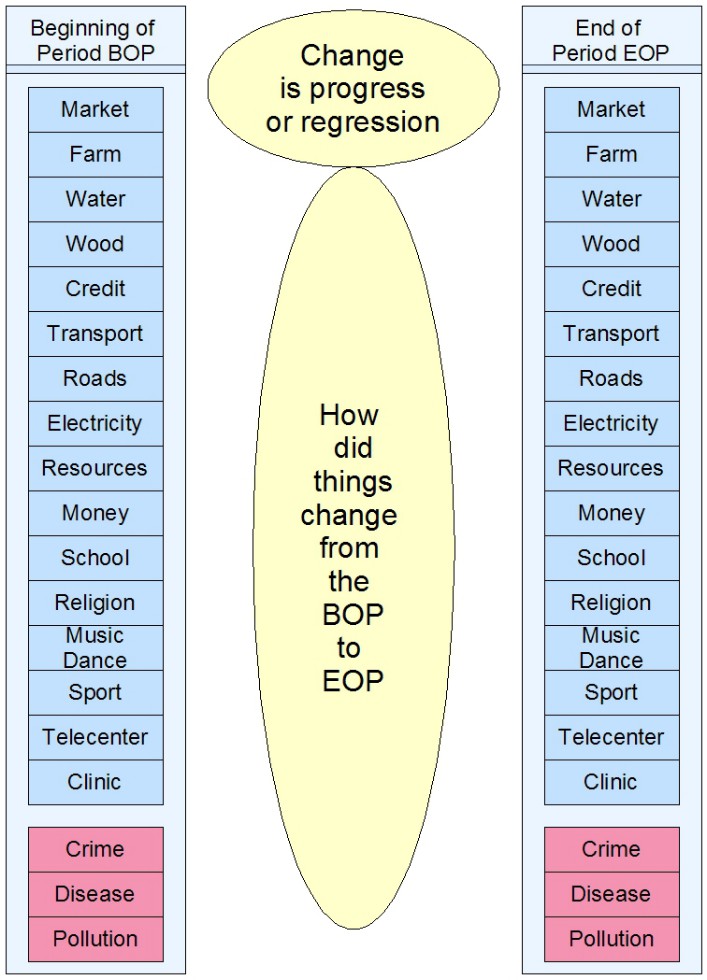
Date: 2025-11-29 Page is: DBtxt003.php n8-Progress-of-the-community-1
Definitions for TrueValueMetrics
Progress of the Community
Change in State is a measure of Progress
In corporate accounting the profit may be computed in two different ways.
- One is to aggregate all the transactions for the period ... all the revenues and all the expenses. The difference is the profit or loss for the period.
- The other is to compare the balance sheet at the beginning of the period with the balance sheet at the end of the period.
The methodology where balance sheet change is used to determine profit requires less detail work ... and in the past was sometimes referred to as 'accounting from incomplete records'.
TVM uses this concept to simplify the accounting for value ... that is for community valuadd.
The productivity of daily activities changes community value between the beginning and the end of the period. In a stable community ordinary activities produce no change ... life goes on ... value at the beginning of the period is the same as at the end of the period. Ordinary activities produce no change.
The following graphic illustrates the concept. On the left there are all sorts of social issues. On the right there are the same set of social issues. Some are positives (like Market) and some are negatives (like Crime).
- Progress is when a summary of the end of period (EOP) issues is 'better' than the beginning of period (BOP) issues.
- Performance is the relationship between how much progress there is and how much of resources are used to deliver this progress.
